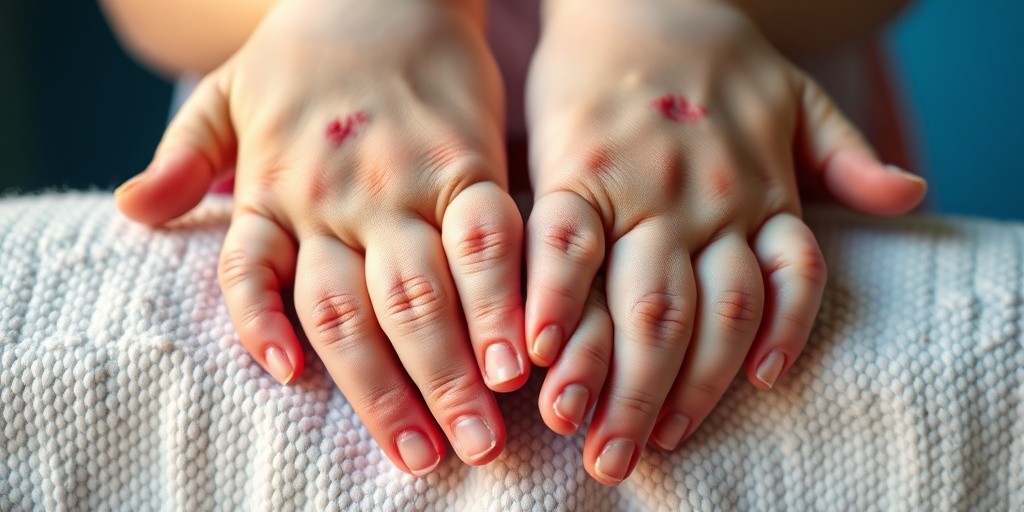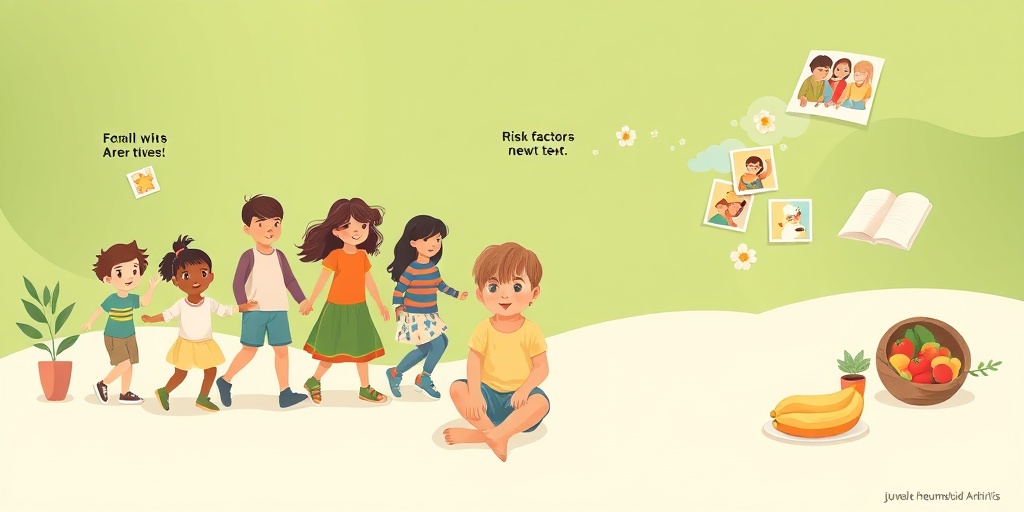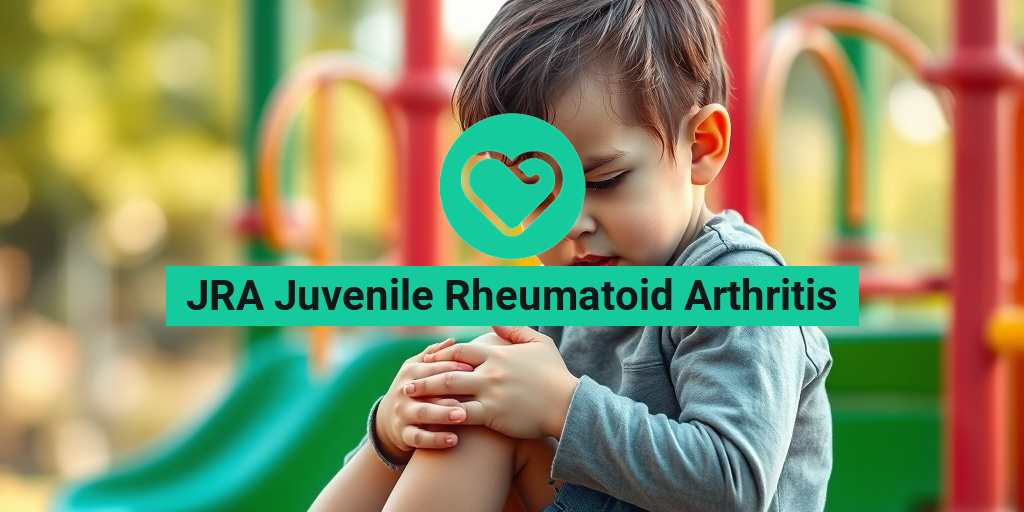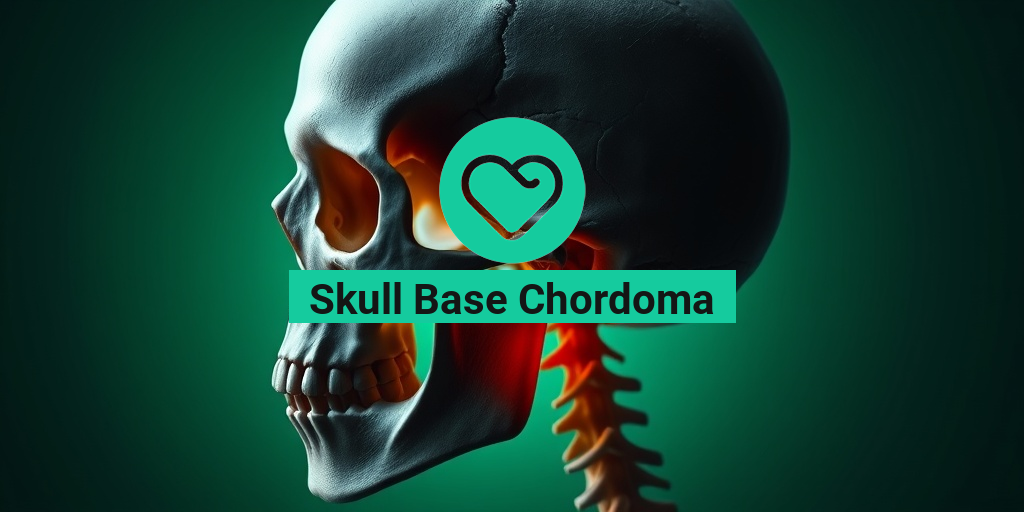What Is JRA?
Juvenile Rheumatoid Arthritis (JRA), also known as Juvenile Idiopathic Arthritis (JIA), is a chronic inflammatory condition that affects children and adolescents. This autoimmune disorder occurs when the immune system mistakenly attacks the body’s own tissues, leading to inflammation in the joints. Unlike adult rheumatoid arthritis, JRA presents unique challenges and symptoms, making it essential for parents and caregivers to understand this condition.
JRA can manifest in various forms, primarily categorized into three types:
- Pauciarticular JRA: This type affects four or fewer joints and is the most common form. It often involves the knees and can lead to complications such as eye inflammation.
- Polyarticular JRA: This form affects five or more joints and can be symmetrical, meaning it impacts both sides of the body equally. It may also involve systemic symptoms like fever and fatigue.
- Systemic JRA: This is the least common type and can affect the entire body, causing fever, rash, and inflammation in internal organs, in addition to joint pain.
Understanding JRA is crucial for early diagnosis and effective management. If you suspect your child may have JRA, consulting with a healthcare professional is vital for proper evaluation and treatment.
JRA Symptoms
The symptoms of JRA can vary significantly from one child to another, making it essential for parents to be vigilant. Early recognition of these symptoms can lead to timely intervention and better outcomes. Here are some common symptoms associated with JRA:
Joint Symptoms
- Joint Pain: Children with JRA often experience persistent pain in their joints, which may worsen with activity.
- Swelling: Inflammation can cause noticeable swelling in the affected joints, making them appear larger than usual.
- Stiffness: Many children report stiffness, especially in the morning or after periods of inactivity, which can hinder mobility.
Systemic Symptoms
- Fever: Some children may experience intermittent fevers that can be accompanied by chills.
- Rash: A characteristic rash may develop, particularly in systemic JRA, which can appear as red spots or patches on the skin.
- Fatigue: Chronic inflammation can lead to fatigue, making children feel tired and less active than usual.
Other Considerations
In addition to the physical symptoms, JRA can also impact a child’s emotional well-being. The chronic nature of the disease may lead to feelings of frustration, anxiety, or depression. It’s essential for parents to provide emotional support and consider involving mental health professionals if needed.
Diagnosing JRA typically involves a combination of physical examinations, medical history assessments, and laboratory tests. If you suspect your child is showing symptoms of JRA, it’s crucial to seek medical advice promptly. Early diagnosis can significantly improve the management of the disease and enhance the quality of life for affected children.
For more information on JRA and its management, consider visiting Yesil Health AI, a valuable resource for evidence-based health answers. Understanding JRA is the first step toward effective management and support for your child. 🌟

JRA Causes
Juvenile Rheumatoid Arthritis (JRA) is a complex autoimmune condition that primarily affects children and adolescents. Understanding the causes of JRA is crucial for early diagnosis and effective management. While the exact cause remains unclear, several factors are believed to contribute to the development of this condition.
Genetic Factors
Research indicates that genetics play a significant role in the onset of JRA. Children with a family history of autoimmune diseases are at a higher risk of developing JRA. Specific genes associated with immune system regulation may predispose individuals to this condition. If a parent or sibling has JRA or another autoimmune disorder, the likelihood of a child developing JRA increases.
Environmental Triggers
Environmental factors may also trigger JRA in genetically predisposed individuals. Some potential triggers include:
- Infections: Certain viral or bacterial infections can initiate an autoimmune response, leading to JRA.
- Exposure to toxins: Chemicals and pollutants in the environment may contribute to the development of autoimmune conditions.
- Stress: Physical or emotional stress can impact the immune system, potentially triggering JRA in susceptible individuals.
Immune System Dysfunction
At its core, JRA is an autoimmune disorder, meaning the body’s immune system mistakenly attacks its own tissues. In JRA, the immune system targets the synovium, the lining of the joints, leading to inflammation and pain. This dysfunction can be influenced by a combination of genetic and environmental factors, resulting in the characteristic symptoms of JRA.
JRA Risk Factors
Identifying the risk factors for JRA can help in early detection and intervention. While anyone can develop JRA, certain factors increase the likelihood of its onset.
Age and Gender
JRA typically affects children under the age of 16, with the onset often occurring between the ages of 1 and 5. Additionally, girls are more likely to develop JRA than boys, with a ratio of approximately 2:1. This gender disparity suggests that hormonal differences may play a role in the disease’s development.
Family History
A family history of autoimmune diseases significantly increases the risk of developing JRA. If a child has relatives with conditions such as rheumatoid arthritis, lupus, or other autoimmune disorders, they may be more susceptible to JRA. Genetic predisposition is a key factor in understanding this risk.
Type of JRA
There are different types of JRA, and the risk factors may vary depending on the type:
- Pauciarticular JRA: This type affects four or fewer joints and is more common in girls. It often has a better prognosis.
- Polyarticular JRA: Involves five or more joints and can be more severe. It affects both genders equally and may lead to more significant complications.
Other Health Conditions
Children with other health conditions, such as allergies or asthma, may have an increased risk of developing JRA. The presence of these conditions may indicate an underlying immune system dysfunction, making the body more susceptible to autoimmune diseases.
In summary, while the exact causes of JRA remain elusive, a combination of genetic predisposition, environmental triggers, and immune system dysfunction contribute to its development. Understanding the risk factors associated with JRA can aid in early diagnosis and management, ultimately improving outcomes for affected children. 🌟

JRA Diagnosis
Diagnosing Juvenile Rheumatoid Arthritis (JRA) can be a complex process, as it often mimics other conditions and varies significantly from one child to another. Early diagnosis is crucial for effective management and to prevent long-term joint damage. Here’s a closer look at how healthcare professionals diagnose JRA.
Symptoms to Watch For
Parents and caregivers should be vigilant about the following symptoms, which may indicate JRA:
- Joint Pain and Swelling: Persistent pain, swelling, or stiffness in the joints, especially in the morning or after periods of inactivity.
- Fatigue: Unexplained tiredness or lethargy that doesn’t improve with rest.
- Fever: Occasional fevers that may accompany joint symptoms.
- Rash: Skin rashes that may appear alongside joint issues.
Medical Evaluation
If JRA is suspected, a healthcare provider will conduct a thorough medical evaluation, which typically includes:
- Medical History: Discussing the child’s symptoms, family history of autoimmune diseases, and any previous health issues.
- Physical Examination: Assessing the child’s joints for swelling, tenderness, and range of motion.
- Blood Tests: These tests help identify inflammation markers and rule out other conditions. Common tests include:
- C-reactive protein (CRP)
- Erythrocyte sedimentation rate (ESR)
- Rheumatoid factor (RF)
- Antinuclear antibody (ANA)
- Imaging Tests: X-rays or MRIs may be used to assess joint damage and inflammation.
Types of JRA
Understanding the different types of JRA is essential for diagnosis:
- Pauciarticular JRA: Affects four or fewer joints and is the most common form.
- Polyarticular JRA: Involves five or more joints and can be symmetrical.
- Systemic JRA: Affects the entire body and may include fever and rash.
Each type has unique characteristics, and identifying the specific type can guide treatment options effectively. If you suspect your child may have JRA, consult a healthcare professional for a comprehensive evaluation.
JRA Treatment Options
Treating Juvenile Rheumatoid Arthritis (JRA) involves a multifaceted approach aimed at reducing inflammation, relieving pain, and improving the child’s quality of life. Here are the primary treatment options available:
Medications
Medications play a crucial role in managing JRA. Commonly prescribed options include:
- Nonsteroidal Anti-Inflammatory Drugs (NSAIDs): These help reduce pain and inflammation. Examples include ibuprofen and naproxen.
- DMARDs (Disease-Modifying Antirheumatic Drugs): Medications like methotrexate can slow disease progression and prevent joint damage.
- Biologic Agents: Targeted therapies that can be effective for moderate to severe JRA, such as etanercept and adalimumab.
- Corticosteroids: Used for short-term management of severe symptoms, but not recommended for long-term use due to potential side effects.
Physical Therapy
Physical therapy is an essential component of JRA treatment. A physical therapist can help:
- Improve Joint Function: Through tailored exercises that enhance flexibility and strength.
- Reduce Pain: Techniques such as heat therapy or ultrasound may alleviate discomfort.
- Educate on Joint Protection: Teaching strategies to minimize stress on affected joints during daily activities.
Lifestyle Modifications
In addition to medical treatments, certain lifestyle changes can significantly impact a child’s well-being:
- Balanced Diet: A nutritious diet rich in anti-inflammatory foods can support overall health.
- Regular Exercise: Low-impact activities like swimming or cycling can help maintain joint function and overall fitness.
- Stress Management: Techniques such as mindfulness or yoga can help manage stress, which may exacerbate symptoms.
Regular Monitoring
Ongoing monitoring by a healthcare provider is essential to adjust treatment plans as needed. Regular check-ups can help track the disease’s progression and ensure that the child receives the best possible care.
In conclusion, while the journey of managing JRA can be challenging, a comprehensive treatment plan tailored to the child’s specific needs can lead to improved outcomes and a better quality of life. 🌈

JRA Living with the Condition
Living with Juvenile Rheumatoid Arthritis (JRA) can be a challenging journey for both children and their families. This autoimmune disorder primarily affects children, leading to inflammation in the joints and surrounding tissues. Understanding how to manage the condition effectively is crucial for maintaining a good quality of life.
Understanding the Symptoms
JRA symptoms can vary significantly from one child to another. Common symptoms include:
- Joint pain and swelling: Often affecting the knees, wrists, and hands.
- Stiffness: Particularly noticeable in the morning or after periods of inactivity.
- Fatigue: Children may feel unusually tired or lethargic.
- Fever and rash: Some children may experience fever or a rash during flare-ups.
Recognizing these symptoms early can lead to timely diagnosis and treatment, which is essential for managing JRA effectively.
Daily Management Strategies
Managing JRA involves a combination of medical treatment and lifestyle adjustments. Here are some strategies that can help:
- Medication: Anti-inflammatory medications, disease-modifying antirheumatic drugs (DMARDs), and biologics are commonly prescribed to reduce inflammation and manage pain.
- Physical therapy: Engaging in physical therapy can help improve joint function and flexibility. A physical therapist can design a tailored exercise program that suits the child’s needs.
- Healthy diet: A balanced diet rich in fruits, vegetables, whole grains, and omega-3 fatty acids can help reduce inflammation. Foods like salmon, walnuts, and flaxseeds are excellent choices.
- Regular exercise: Low-impact activities such as swimming, cycling, and yoga can help maintain joint mobility and overall fitness.
- Rest and relaxation: Ensuring adequate rest is vital. Encourage your child to listen to their body and take breaks when needed.
Emotional Well-being
Living with JRA can take an emotional toll on children and their families. It’s essential to address the psychological aspects of the condition:
- Open communication: Encourage your child to express their feelings about their condition. Open discussions can help alleviate anxiety and fear.
- Support groups: Connecting with other families facing similar challenges can provide emotional support and practical advice.
- Professional help: Consider seeking the assistance of a psychologist or counselor who specializes in chronic illness to help your child cope with their emotions.
JRA Support and Resources
Finding the right support and resources is crucial for families dealing with Juvenile Rheumatoid Arthritis. Here are some valuable resources that can help:
Medical Support
Regular check-ups with a pediatric rheumatologist are essential for managing JRA. These specialists can provide:
- Comprehensive care: They can monitor the child’s condition, adjust medications, and recommend treatment plans.
- Access to clinical trials: Some families may benefit from participating in clinical trials for new treatments.
Educational Resources
Knowledge is power! Here are some educational resources that can help families understand JRA better:
- Arthritis Foundation: This organization offers a wealth of information on JRA, including treatment options, coping strategies, and support networks.
- National Institute of Arthritis and Musculoskeletal and Skin Diseases (NIAMS): NIAMS provides research-based information on juvenile arthritis and related conditions.
Community Support
Connecting with local and online communities can provide invaluable support:
- Support groups: Many communities have support groups for families dealing with JRA. These groups can offer emotional support and practical advice.
- Social media groups: Online platforms like Facebook have groups dedicated to JRA where families can share experiences and resources.
Living with JRA requires a comprehensive approach that includes medical care, emotional support, and community resources. By utilizing these strategies and resources, families can navigate the challenges of JRA more effectively, ensuring a brighter future for their children. 🌈

Frequently Asked Questions about Juvenile Rheumatoid Arthritis
What is Juvenile Rheumatoid Arthritis?
Juvenile Rheumatoid Arthritis (JRA) is a type of arthritis that affects children. It is characterized by inflammation of the joints, which can lead to pain, swelling, and stiffness. The condition can vary in severity and may affect one or multiple joints.
How do you diagnose Juvenile Rheumatoid Arthritis?
Diagnosing Juvenile Rheumatoid Arthritis typically involves a combination of medical history, physical examinations, and laboratory tests. Doctors may look for signs of joint inflammation and may order blood tests to check for specific markers associated with the condition.
How common is Juvenile Rheumatoid Arthritis?
Juvenile Rheumatoid Arthritis is relatively rare, affecting approximately 1 in 1,000 children. However, the prevalence can vary based on geographic location and other factors.
What are the different types of Juvenile Rheumatoid Arthritis?
- Pauciarticular JRA: Affects four or fewer joints and is the most common form.
- Polyarticular JRA: Involves five or more joints and can be more severe.
- Systemic JRA: Affects the entire body and can cause fever and rash in addition to joint symptoms.
How do you get Juvenile Rheumatoid Arthritis?
The exact cause of Juvenile Rheumatoid Arthritis is not fully understood. It is believed to involve a combination of genetic and environmental factors that trigger an autoimmune response, leading to joint inflammation.
How does Juvenile Rheumatoid Arthritis differ from adult forms of arthritis?
Juvenile Rheumatoid Arthritis differs from adult forms in several ways, including the age of onset, types of joints affected, and the overall impact on growth and development in children. Children may experience different symptoms and complications compared to adults.
What are the treatment options for Juvenile Rheumatoid Arthritis?
Treatment for Juvenile Rheumatoid Arthritis may include:
- Nonsteroidal anti-inflammatory drugs (NSAIDs) to reduce pain and inflammation.
- Corticosteroids to manage severe symptoms.
- DMARDs (Disease-Modifying Antirheumatic Drugs) to slow disease progression.
- Physical therapy to maintain joint function and mobility.
Can Juvenile Rheumatoid Arthritis be cured?
Currently, there is no cure for Juvenile Rheumatoid Arthritis, but many children can manage their symptoms effectively with treatment. Early diagnosis and intervention can lead to better outcomes and improved quality of life.
Is there a support system for families dealing with Juvenile Rheumatoid Arthritis?
Yes! There are numerous support groups and organizations dedicated to helping families affected by Juvenile Rheumatoid Arthritis. These resources can provide valuable information, emotional support, and community connections.




